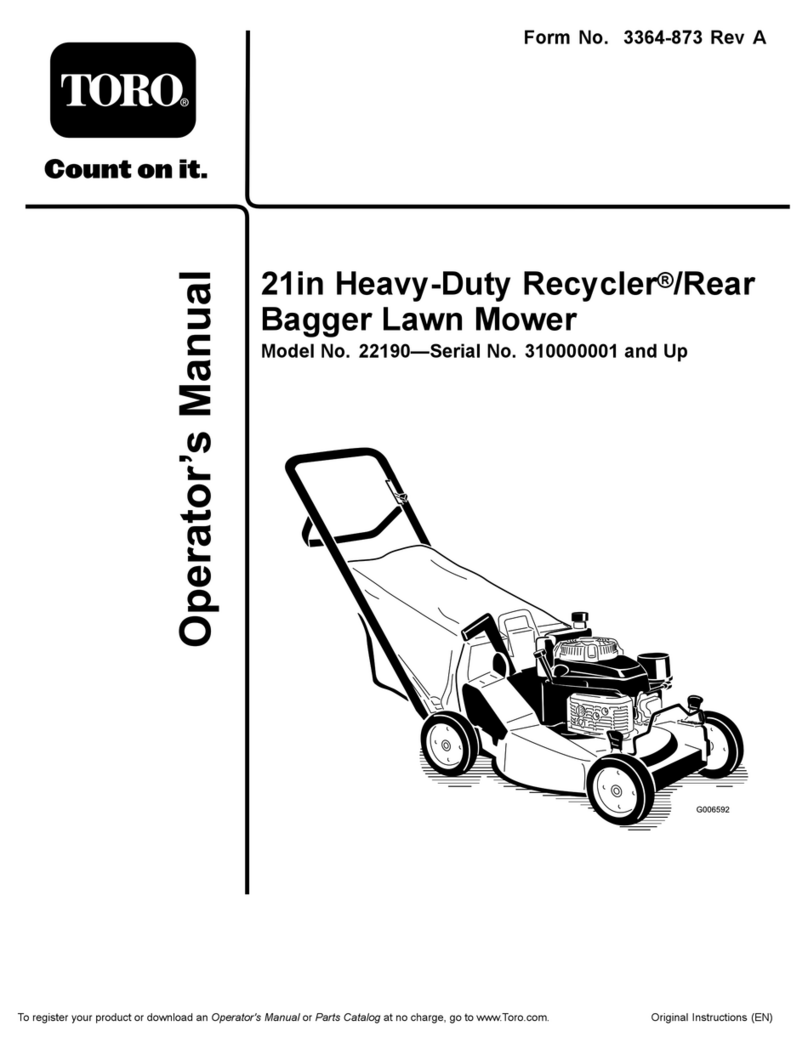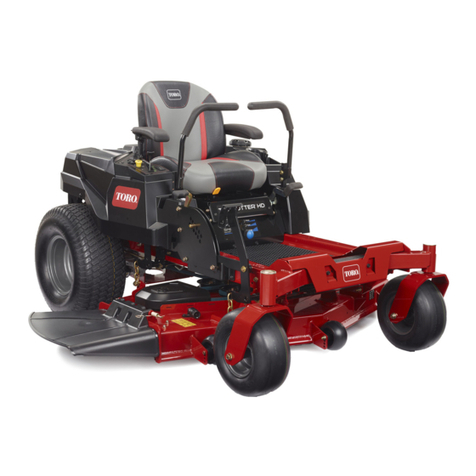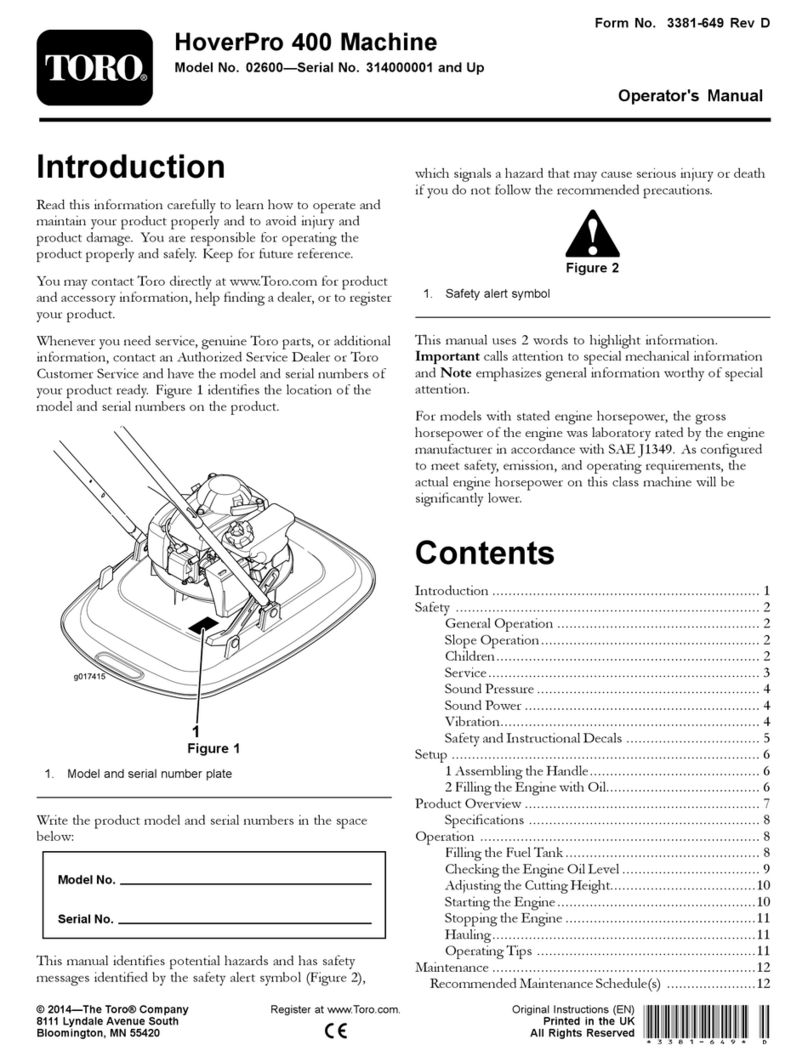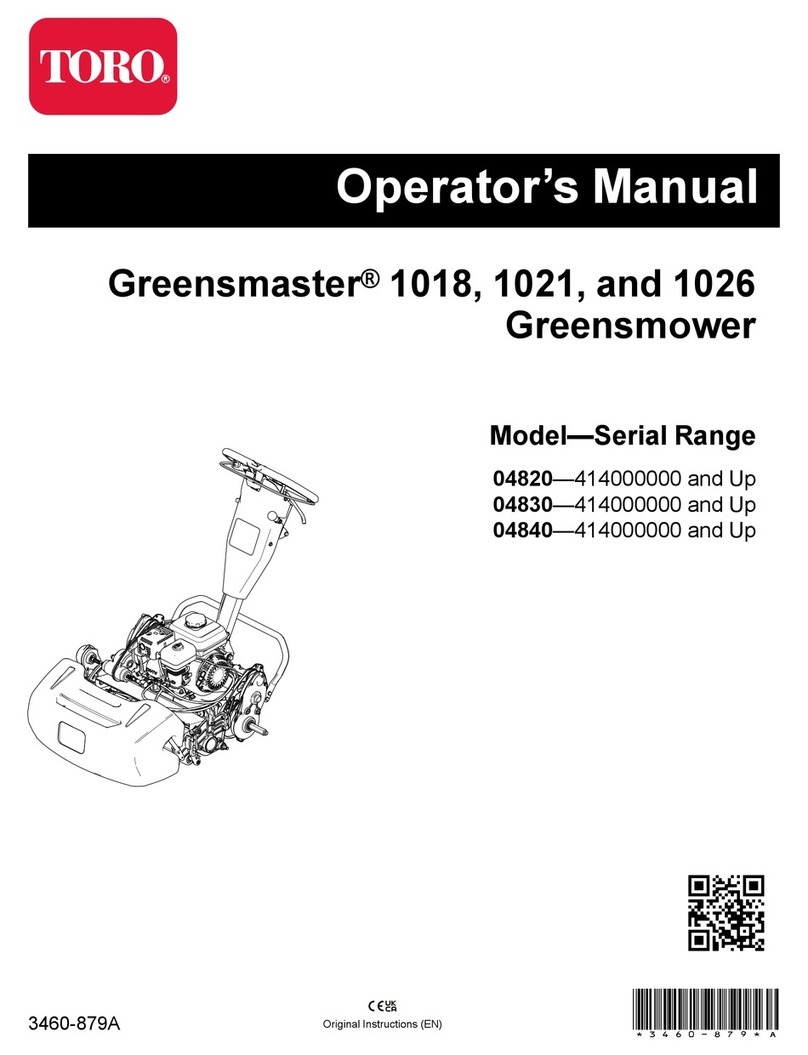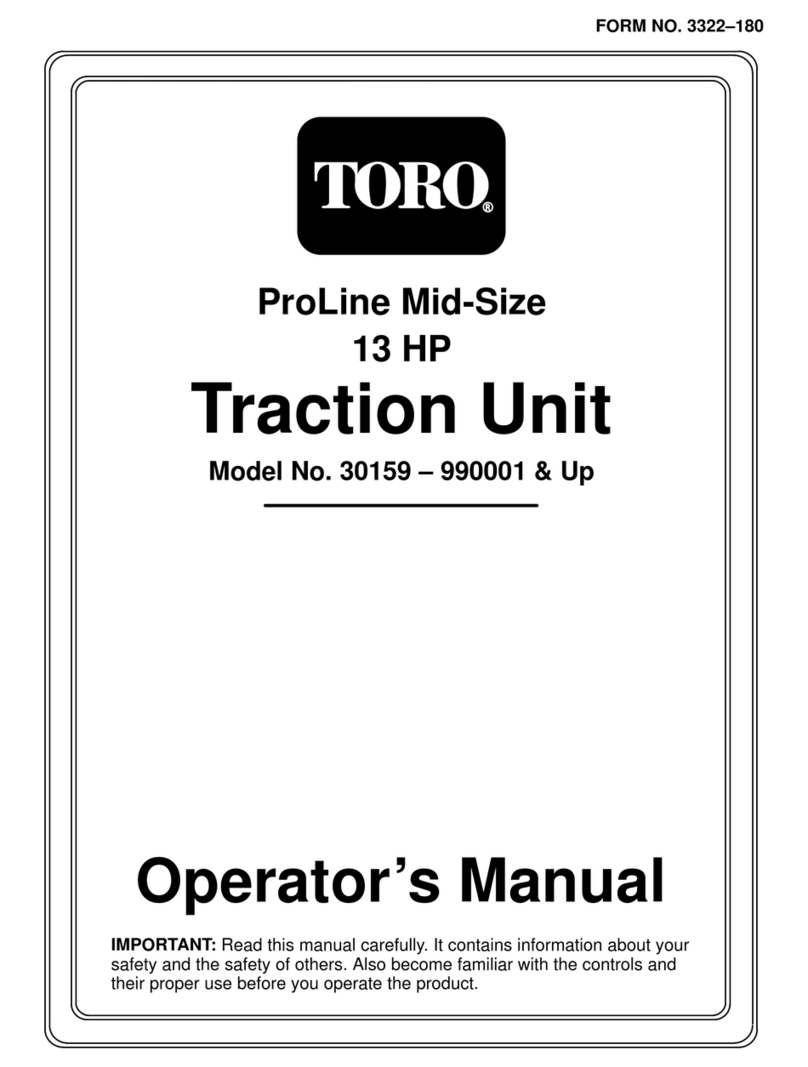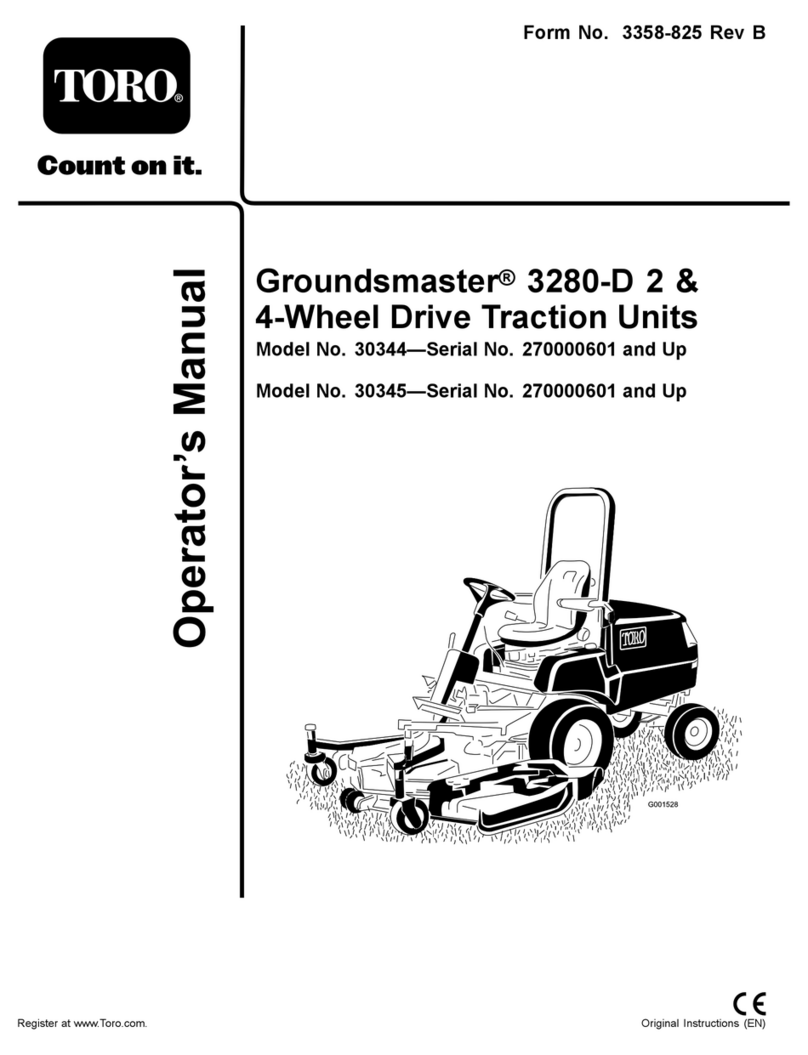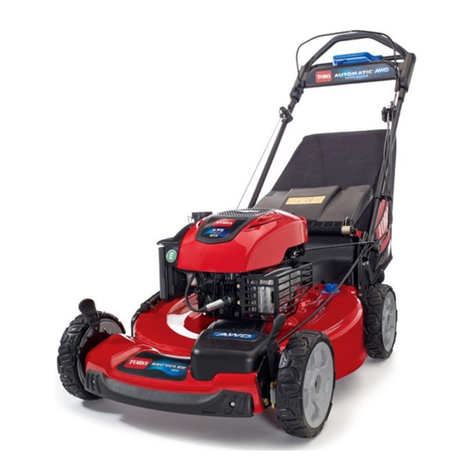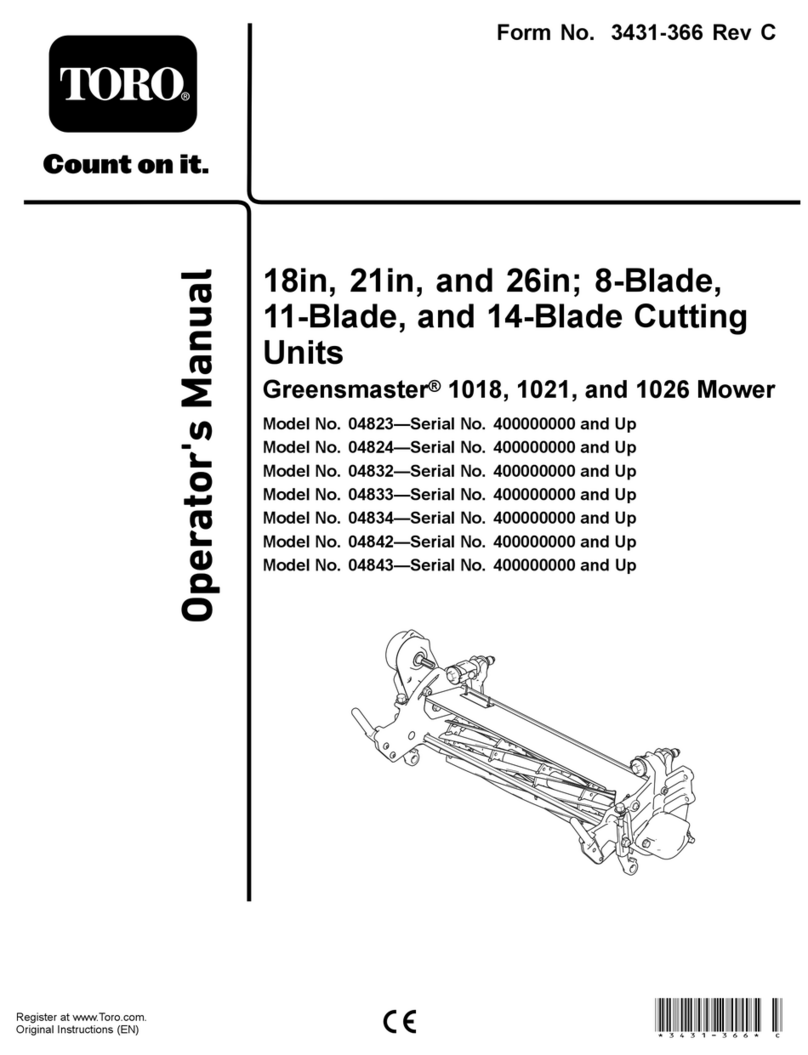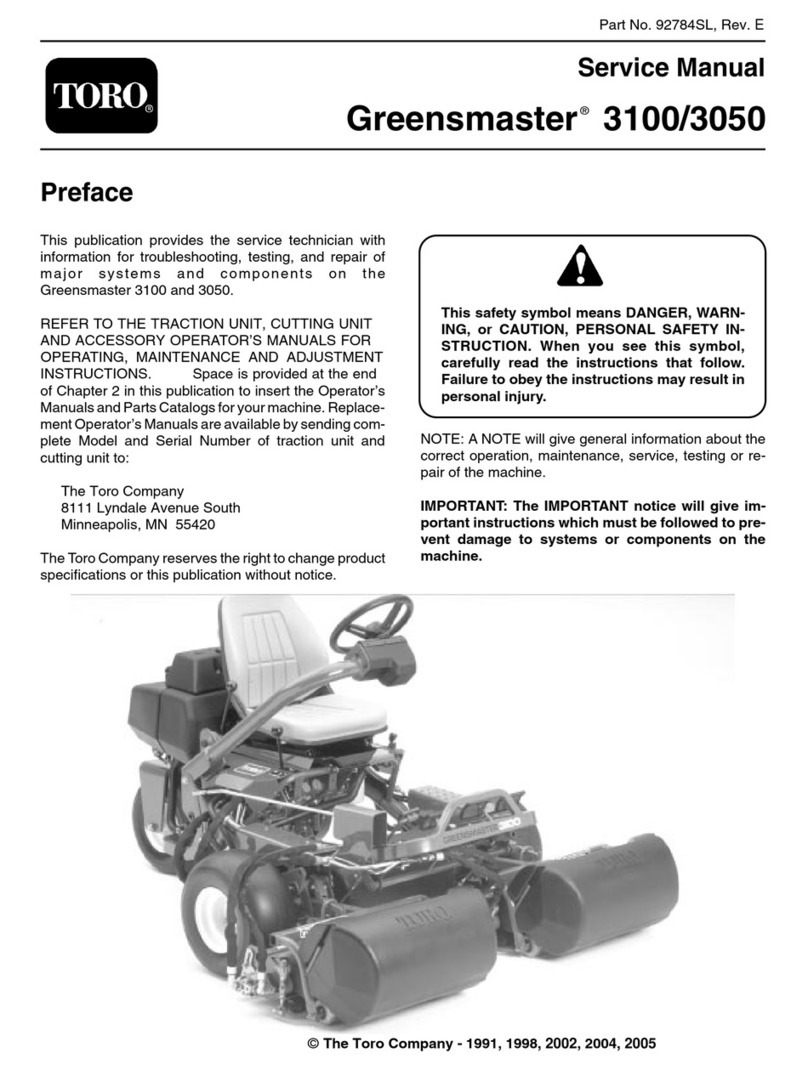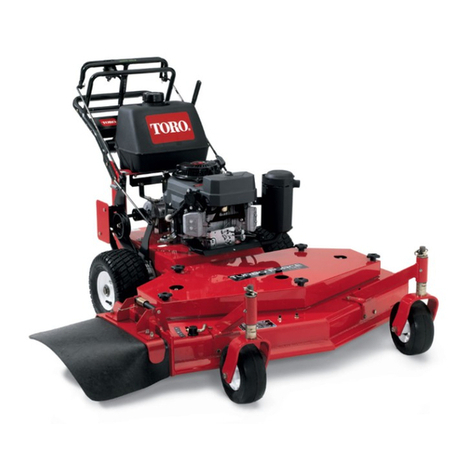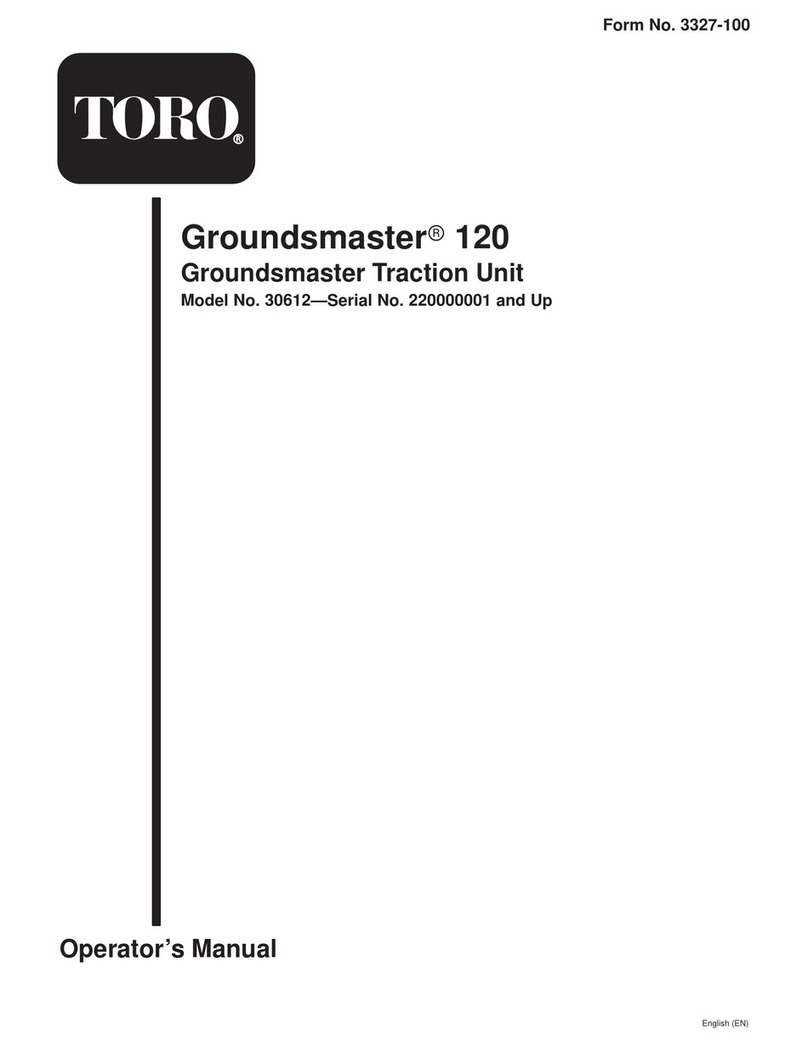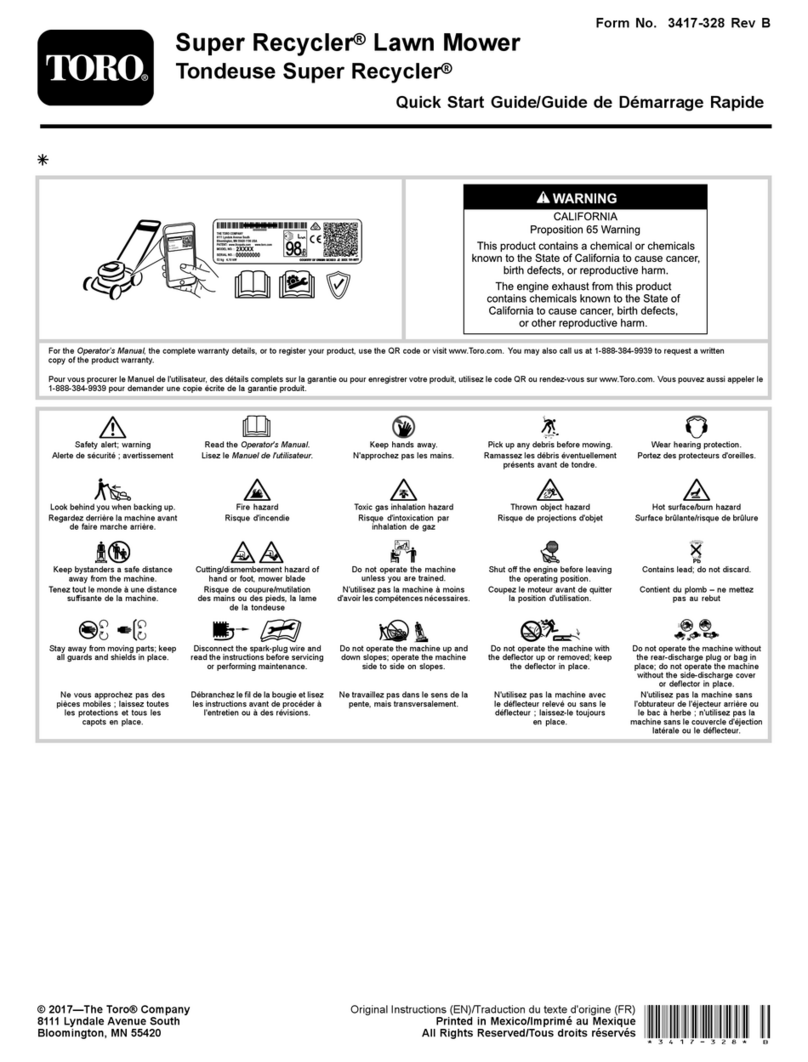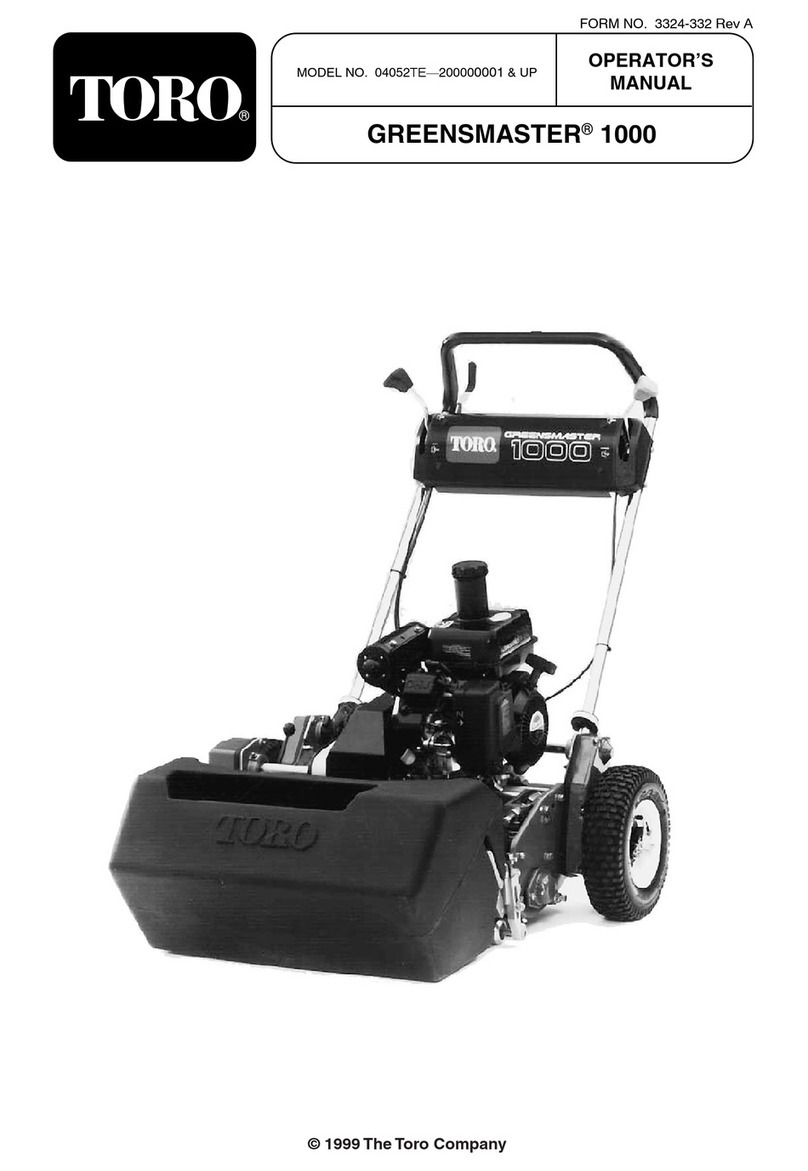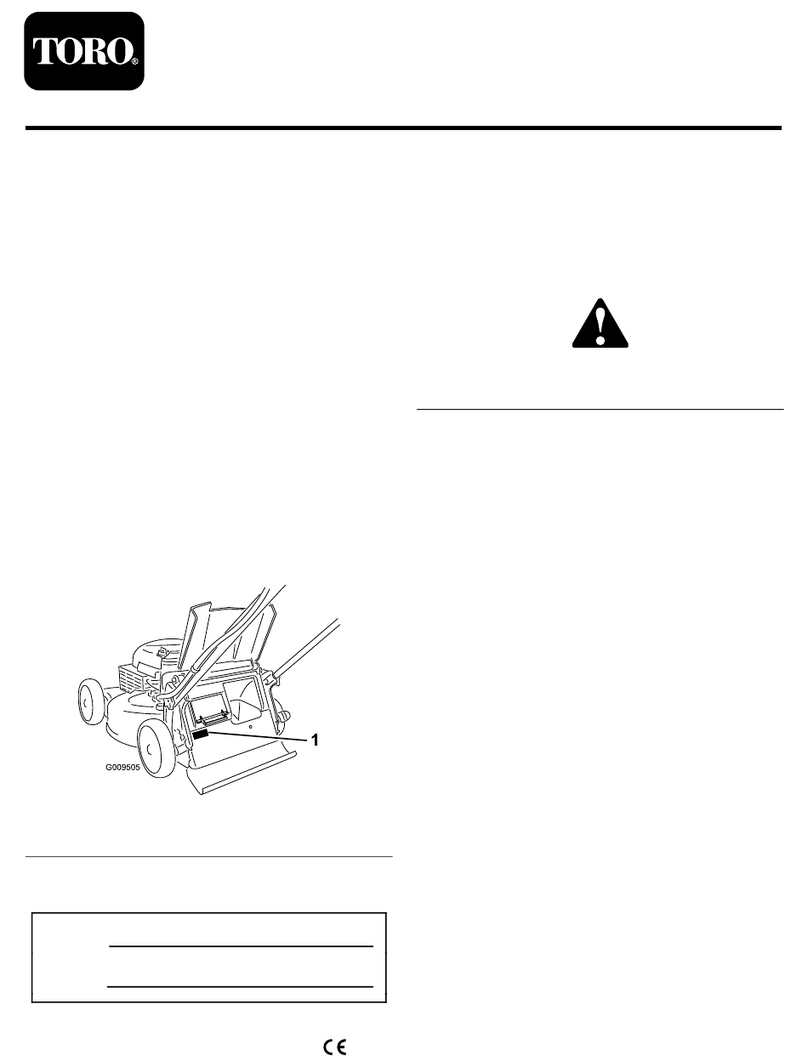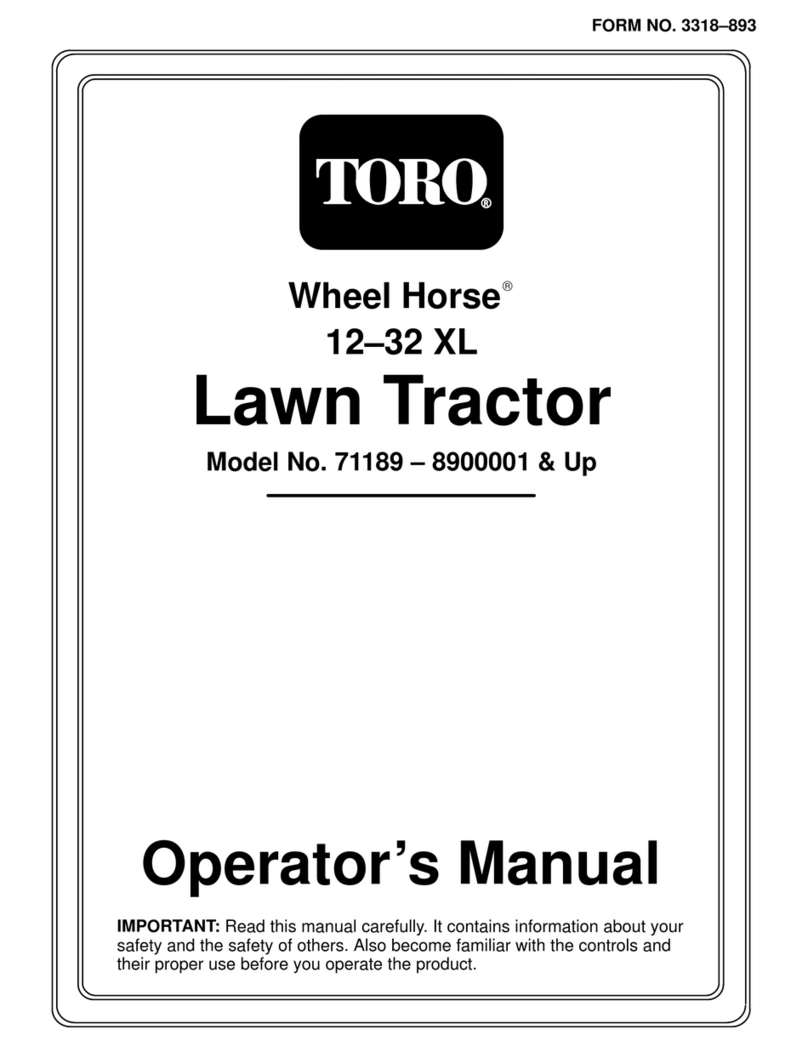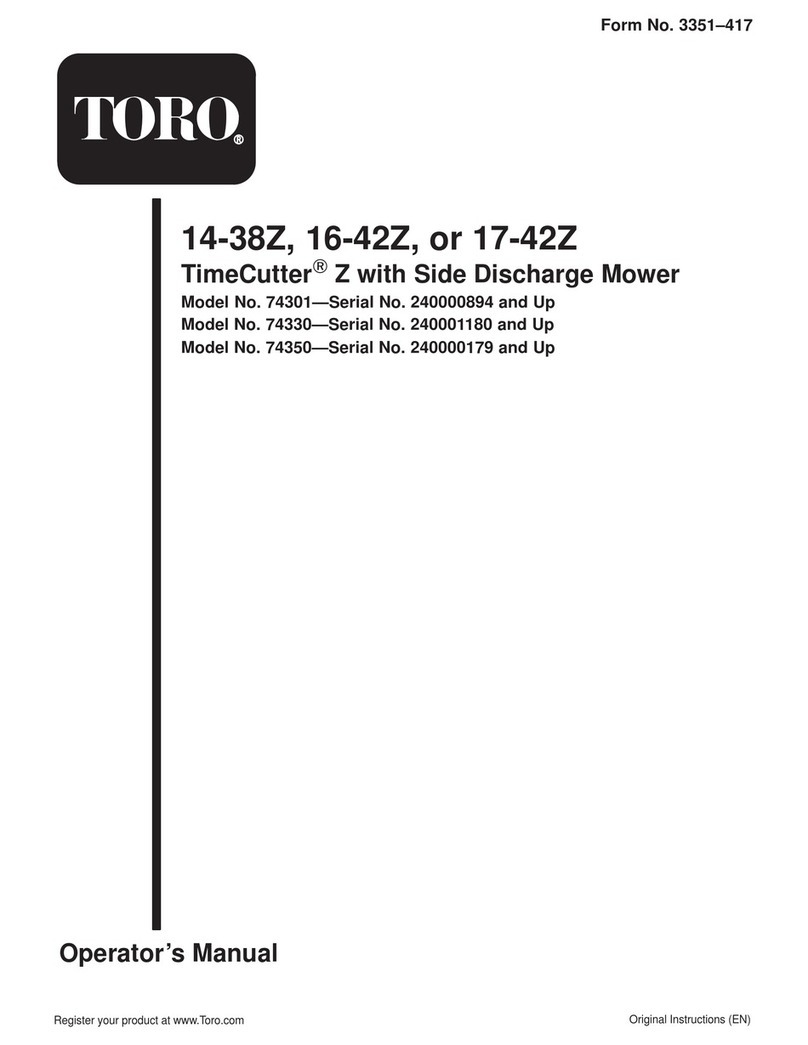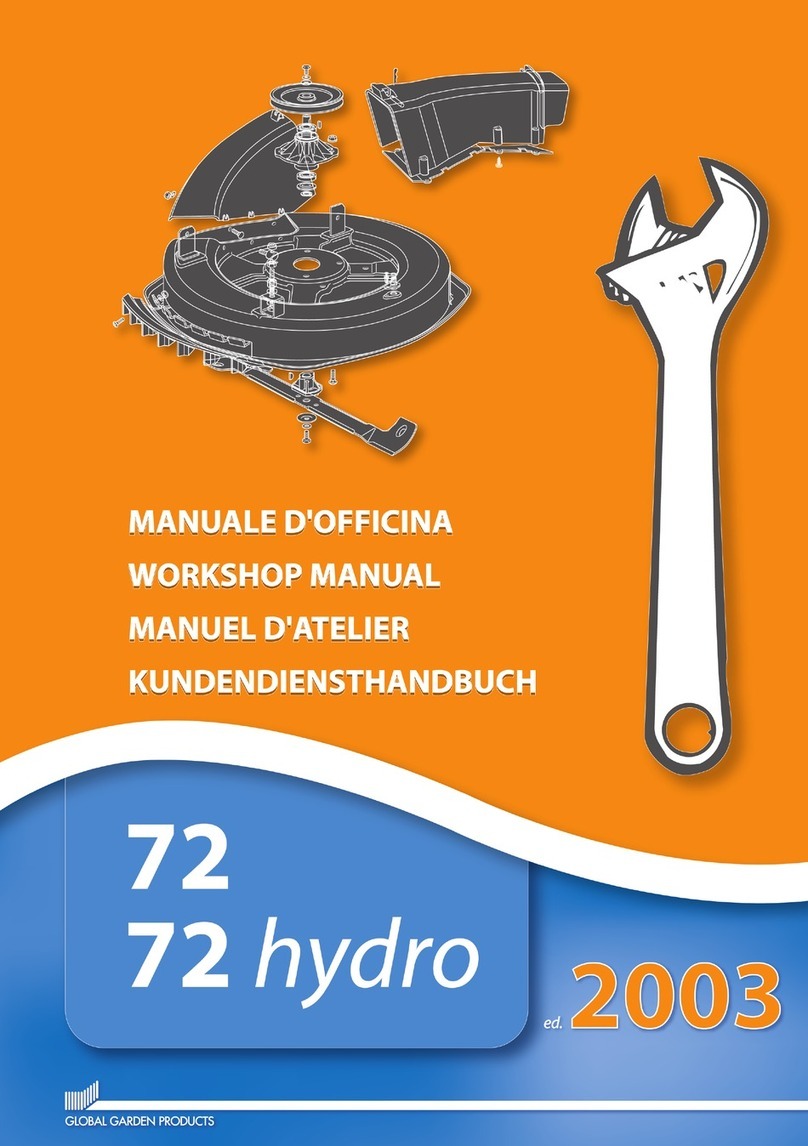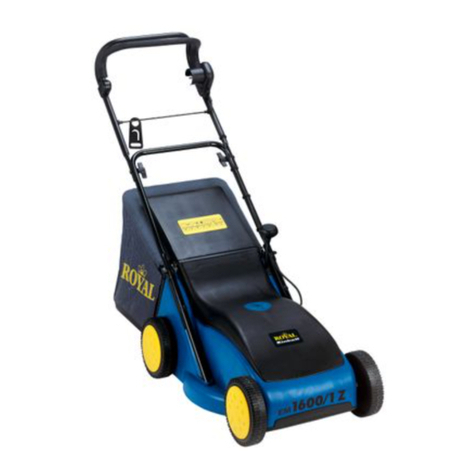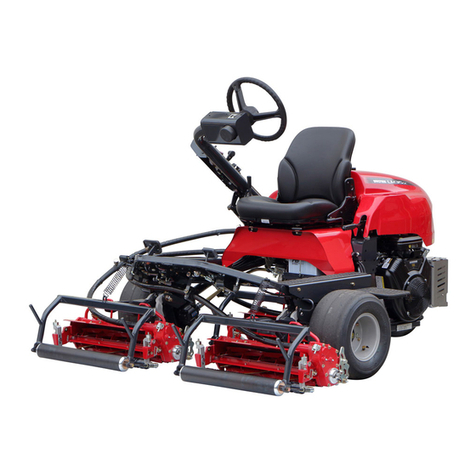
It is recommended that first operation of equipĆ
ment be done at a slow speed with attachment disĆ
engaged. Continue this practice until operator is
thoroughly familiar with the controls and has develĆ
oped operating skills.
Disengage all attachment clutches, set parking
brake and shift into neutral before attempting to start
engine.
Disengage power to attachment(s), set parking
brake and stop engine before leaving operator posiĆ
tion.
Disengage power to attachment(s) and stop enĆ
gine before making any repairs or adjustments.
Disengage power to attachment(s) when transĆ
porting or not in use.
Disengage attachment clutch before attempting
to remove the mower from a hole or other obstrucĆ
tion.
Disengage power to attachment(s) before backĆ
ing. Do not mow in reverse unless absolutely necesĆ
sary and then only after careful observation of the
entire area behind the machine.
LOOK behind machine to make sure the area is
clear before placing the machine in reverse and conĆ
tinue looking behind while backing.
Always back up loading ramps and tilt bed trailĆ
ers.
The parking brake is designed to hold machine
in place at rest, with engine off. Parking brake will
not restrain machine with engine running and transĆ
axle engaged.
Know the terrain on which you are operating
your equipment. There are areas on which your
equipment cannot be safely operated.
Avoid operating equipment on hillsides, slopes
or rough terrain. DO NOT operate machine on hillĆ
sides or slopes exceeding 15_ (27% grade). If safety
is in doubt TAY OFF THE LOPE.
Reduce speed and exercise extreme caution on
slopes above 10_ (18% grade) to prevent tipping or
loss of control. Never mow uphill on these slopes Ċ
mow downhill only. If a steep hill must be ascended,
back up the hill, and drive forward down the hill,
keeping machine in gear. If necessary to turn on hill,
always turn downhill.
Mow up and down the face of slopes greater
than 5_ (9% grade), never across the face. Be espeĆ
cially cautious when changing directions on all
slopes.
Operate your machine smoothly and at a ground
speed slow enough to ensure complete control at all
times. Avoid erratic operation and excessive speed.
harp turns on any terrain may cause loss of
control. Reduce speed and use caution when makĆ
ing sharp turns.
Do not stop or start suddenly when going uphill
or downhill. Avoid uphill starts. If machine is stopped
going up a slope, turn the attachment off and back
slowly down the slope keeping the machine in gear.
Do not stop or change gears (speed) on slopes.
Know the terrain on which you are working. Find
hidden obstacles by walking through and inspecting
the area prior to operating your equipment in that
area. Plainly mark obstacles, such as rocks, ruts or
holes and stay well clear of these obstacles when
operating.
While operating, stay alert for holes, rocks or
roots, which may cause damage to equipment or
upset. Keep at least 3 ft. away from dropĆoffs,
ditches, creeks, culverts, washouts and public highĆ
ways.
Exercise care when mowing around a fixed obĆ
ject to prevent the equipment or attachment from
striking the object. When mowing, never deliberately
run over any foreign object.
Areas wet with dew, rain or snow will be more
slippery than when dry. Areas covered with loose
gravel are more slippery than firm, dry ground.
Greater stopping distances are required in these
slippery areas.
Learn to expect changes in operating conditions.
Adding or removing attachments or weight to your
equipment will make your machine perform differentĆ
ly. Rain, snow, loose gravel, wet grass, etc., change
the tractive conditions of the terrain, requiring
changes in your operating technique, which may
include a decision not to operate on that terrain.
Use care when pulling loads or using heavy
equipment.
A. Use only approved drawbar hitch points.
B. Limit loads to those you can safely control.
C. Do not turn sharply. Use care when backing.
D. Use counterweight(s) or wheel weights when
suggested in operator's manual.
